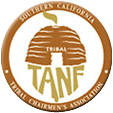Since time immemorial the descendants of the Soboba people are those whom have lived on and occupied the land that is presently known as the cities of San Jacinto, Hemet, Valle Vista and Winchester.
Today the Soboba Indian Reservation lies in the lower reaches of the San Jacinto Mountains, across the San Jacinto River from the city of San Jacinto. Soboba’s Tribal members have a rich and diverse Tribal history as members come from both Cahuilla and Luiseño ancestry. Prior to both Mexican and American settlement in the valley the people of Soboba were virtually self-sufficient.
The Soboba people farmed land that was irrigated with surface water from the San Jacinto River, two of its tributary streams, Poppet and Indian Creeks, and from more than forty perennial springs. These water sources sustained gardens, animals and orchards.
During the Spanish and Mexican rule in California, the Soboba Indians were recognized as an established Indian community.
In approximately 1815, Mission San Luis Rey established Rancho San Jacinto as their furthermost cattle ranch and Luiseño Indians were brought with them as laborers for the ranch. Some of the original Cahuilla inhabitants who were present in the valley during this time intermarried with the Luiseños.
After the missions were secularized the San Jacinto Rancho Viejo was granted to José Antonio Estudillo in 1842, with a stipulation that the new land owner “shall not in any manner prejudice the Indians who are established on said land.” For as long as he lived Jose Antonio Estudillo and Jose Antonio Estudillo Jr. respected the rights and well-being of Soboba Indians. Starting in 1868 the heirs of the Estudillo family began selling various portions of the Rancho San Jacinto Viejo and by 1880 most of the rancho lands had been sold and the Soboba people were left with no legal claim to their land or water.
On June 19, 1883, President Chester Arthur by Executive Order established the Soboba Indian Reservation, a 3,172- acre tract which included the Soboba village and the adjacent hills. The reservation today encompasses nearly 7,000 acres, 400 of which are devoted to residential use.
The Soboba Band has a current enrollment of approximately 1200 tribal members who are governed by an elected tribal council that consists of 5 tribal members.





